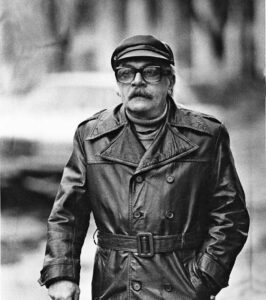David Samuilovich
Samoilov
1920-1990

David Samuilovich Samoilov (his real surname was Kaufman) was a Soviet poet and translator. He was one of the greatest representatives of the generation of poets that left the university benches for the frontlines. Since 1938, he was a student at the MIFLI (Moscow Institute of Philosophy, Literature and History). A year later, David decided to volunteer for the Finnish war, but he was not accepted because of poor health. His pre-war poems Carpenters and Mammoth Hunt were memorized years later by former students of MIFLI. When the World War II broke out, the poet found himself at the labor front, he was sent to dig trenches near Vyazma (Smolensk Region). There he caught a bad cold and was evacuated to Samarkand. In 1942, total conscription began, and David joined a unit that fought near the city of Tikhvin. The soldier received his first award – the For Courage medal for courage and determination in battle. Living on the frontlines inspired Samoilov to write poetic works depicting military life. He created a collective image called Foma Smyslov. These lines were printed in local newspapers. They raised the morale of other soldiers and gave them confidence that victory was not far away. One of Samoilov’s most famous poems about the war was called Forties, Fatal… The author reflects on the universal theme of war and the troubles of the military generation he was part of. However, he did not touch politics in any of his works. The full extent of his work was discovered only after his death. The name of the poet stands equal to the names of Boris Slutsky, Yuri Levitansky, Alexander Mezhirov, Pavel Kogan, Mikhail Kulchitsky. They were veteran poets of the 40’s generation who looked death in the eye, saw the whole underside of war and brought its horrors to modern readers. David Samoilov died after a performance at the Tallinn Drama Theater at an evening dedicated to the 100th anniversary of the birth of his colleague Boris Pasternak. The poet has a memorial plaque in Moscow on the house where he lived and worked from 1922 to 1966.
Address: Moscow, Plochshad Borby, 15

